Prepared by: Checked by: Mukhametzhanova ZH. ASiyazova
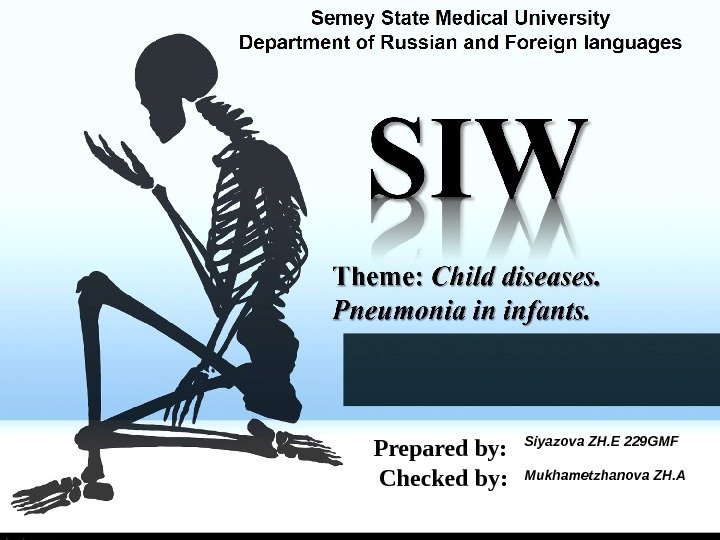
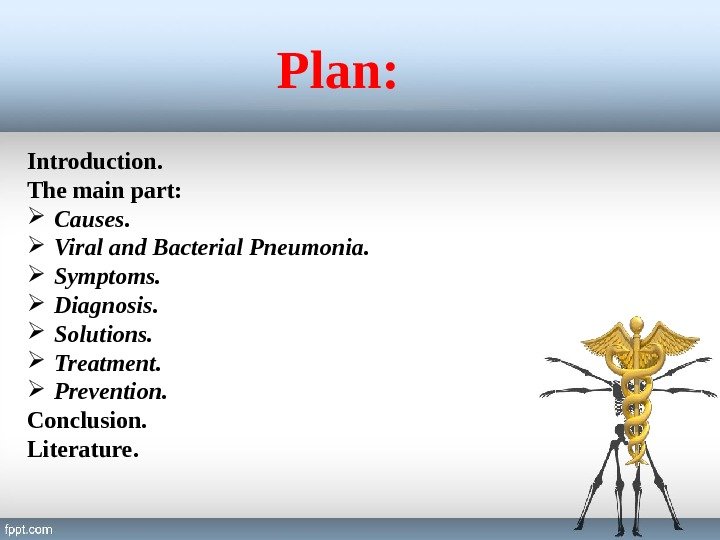
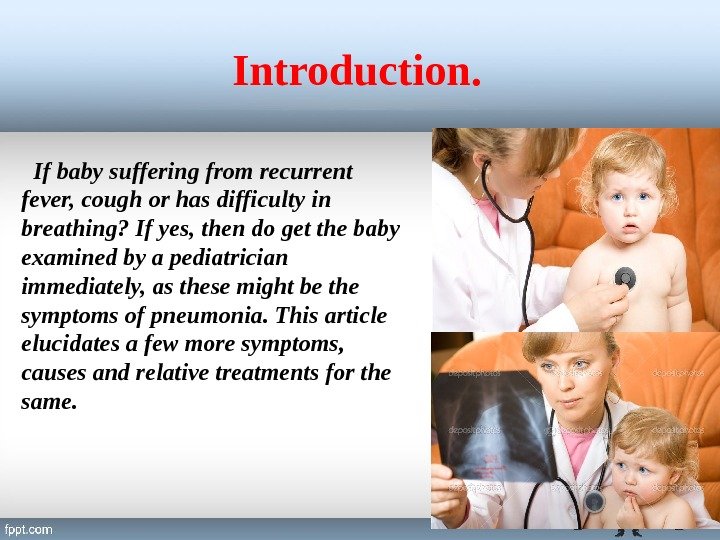
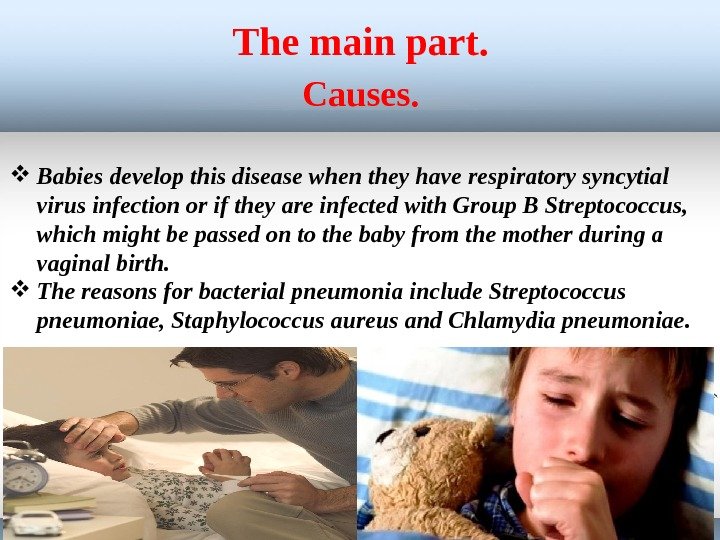
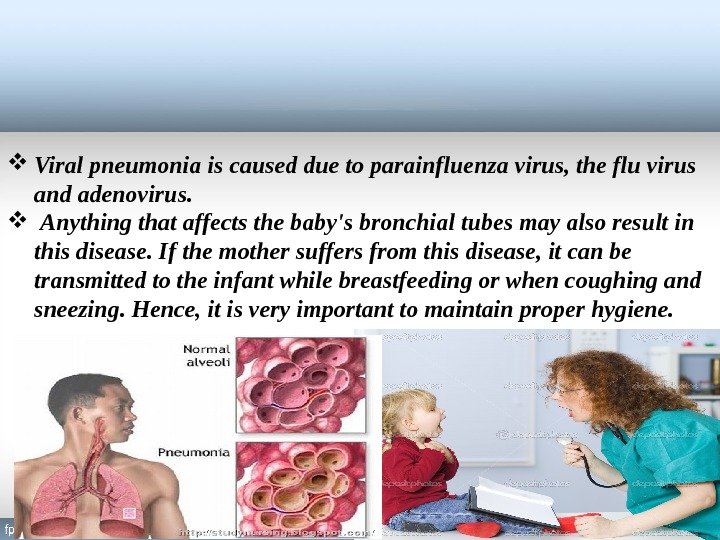
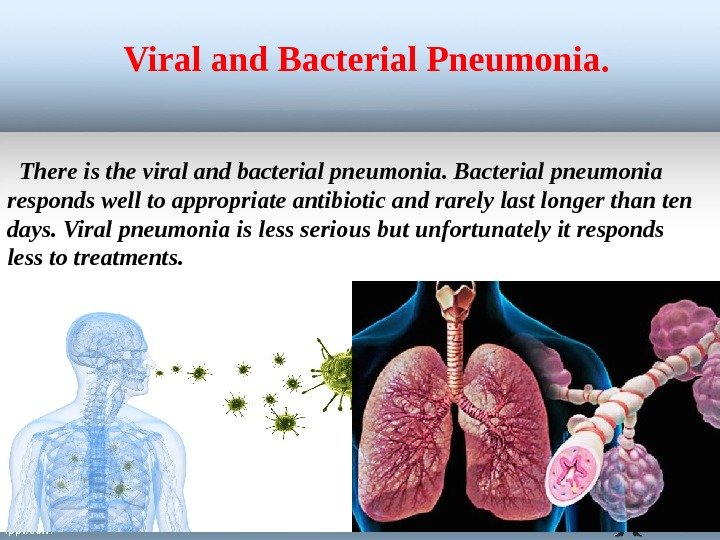

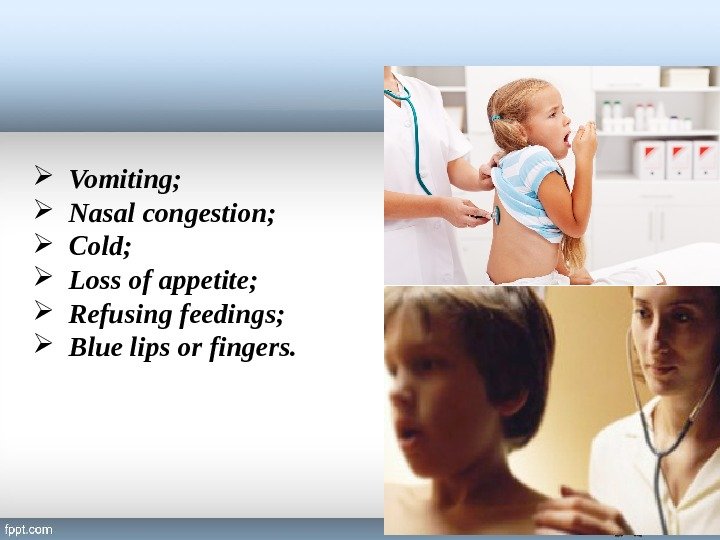
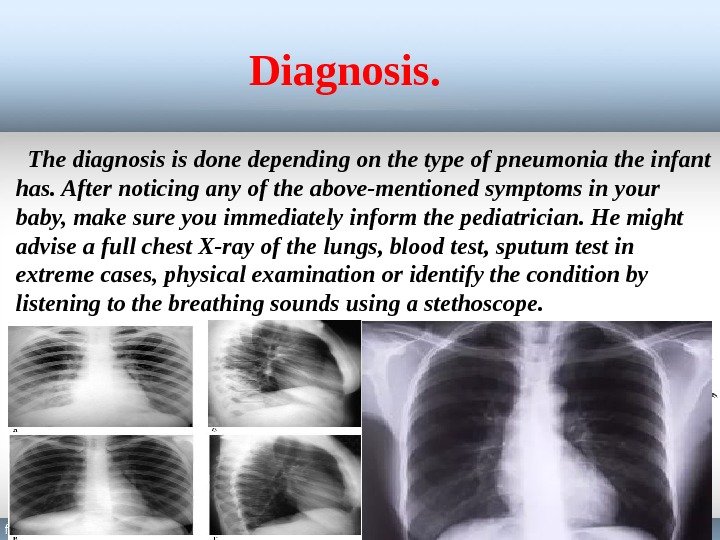
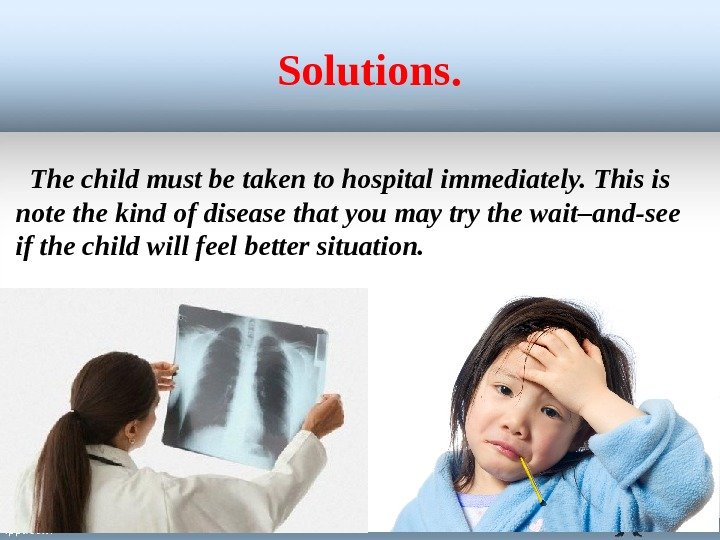
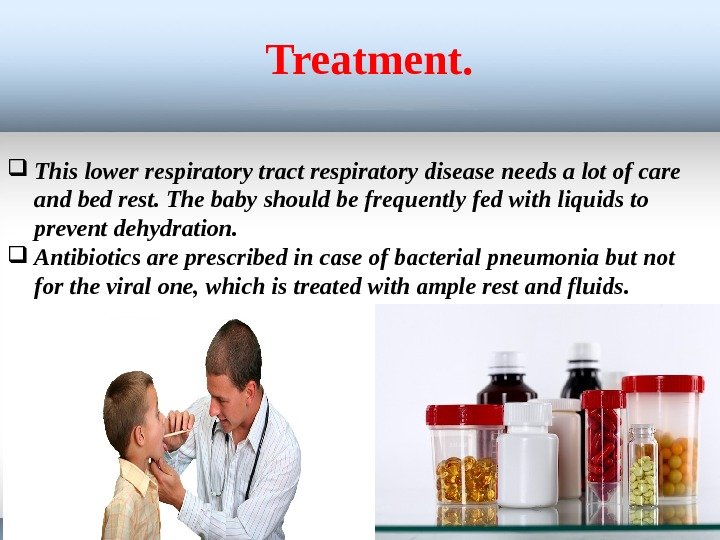
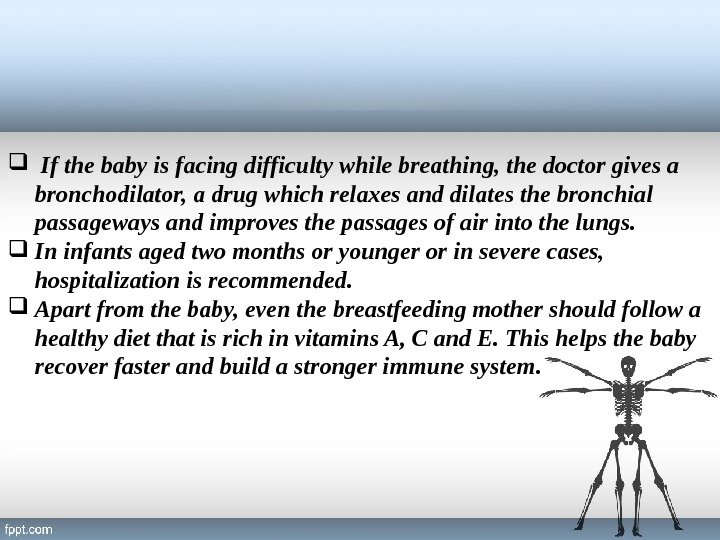
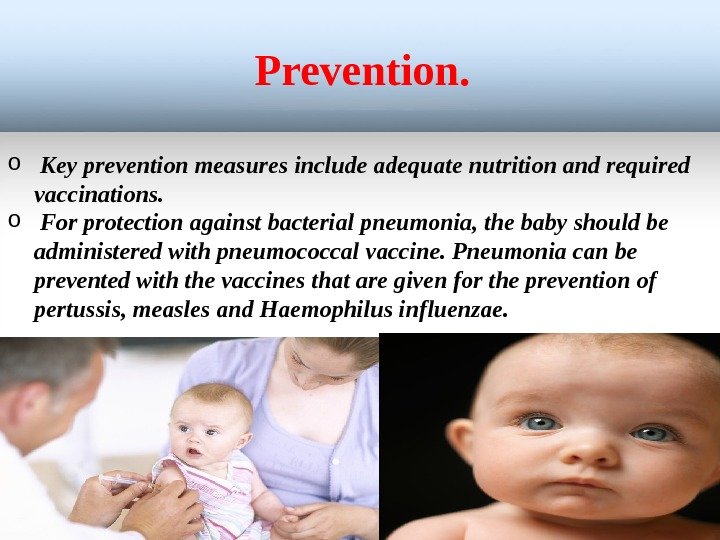

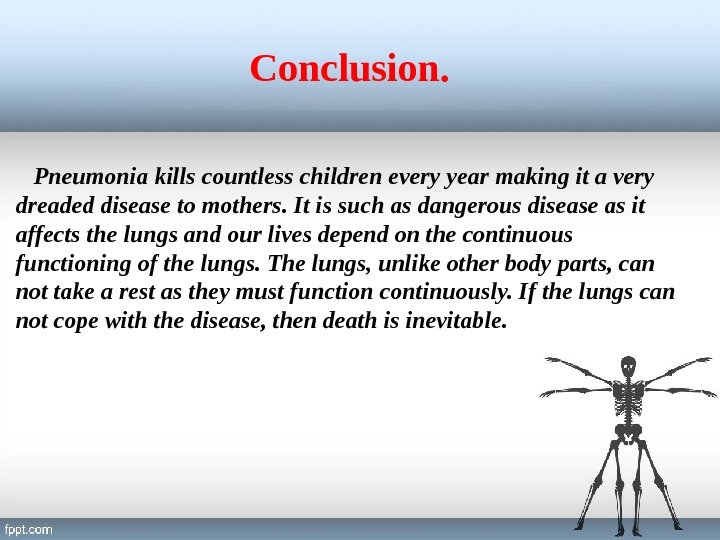

siyazova_zh.229_english.pptx
- Размер: 3.2 Мб
- Автор:
- Количество слайдов: 16
Описание презентации Prepared by: Checked by: Mukhametzhanova ZH. ASiyazova по слайдам
 Prepared by: Checked by: Mukhametzhanova ZH. ASiyazova ZH. E 229 GM
Prepared by: Checked by: Mukhametzhanova ZH. ASiyazova ZH. E 229 GM
 Plan: Introduction. The main part: Causes. Viral and Bacterial Pneumonia. Symptoms. Diagnosis. Solutions. Treatment. Prevention. Conclusion. Literature.
Plan: Introduction. The main part: Causes. Viral and Bacterial Pneumonia. Symptoms. Diagnosis. Solutions. Treatment. Prevention. Conclusion. Literature.
 Introduction. If baby suffering from recurrent fever, cough or has difficulty in breathing? If yes, then do get the baby examined by a pediatrician immediately, as these might be the symptoms of pneumonia. This article elucidates a few more symptoms, causes and relative treatments for the same.
Introduction. If baby suffering from recurrent fever, cough or has difficulty in breathing? If yes, then do get the baby examined by a pediatrician immediately, as these might be the symptoms of pneumonia. This article elucidates a few more symptoms, causes and relative treatments for the same.
 The main part. Causes. Babies develop this disease when they have respiratory syncytial virus infection or if they are infected with Group B Streptococcus, which might be passed on to the baby from the mother during a vaginal birth. The reasons for bacterial pneumonia include Streptococcus pneumoniae, Staphylococcus aureus and Chlamydia pneumoniae.
The main part. Causes. Babies develop this disease when they have respiratory syncytial virus infection or if they are infected with Group B Streptococcus, which might be passed on to the baby from the mother during a vaginal birth. The reasons for bacterial pneumonia include Streptococcus pneumoniae, Staphylococcus aureus and Chlamydia pneumoniae.
 Viral pneumonia is caused due to parainfluenza virus, the flu virus and adenovirus. Anything that affects the baby’s bronchial tubes may also result in this disease. If the mother suffers from this disease, it can be transmitted to the infant while breastfeeding or when coughing and sneezing. Hence, it is very important to maintain proper hygiene.
Viral pneumonia is caused due to parainfluenza virus, the flu virus and adenovirus. Anything that affects the baby’s bronchial tubes may also result in this disease. If the mother suffers from this disease, it can be transmitted to the infant while breastfeeding or when coughing and sneezing. Hence, it is very important to maintain proper hygiene.
 There is the viral and bacterial pneumonia. Bacterial pneumonia responds well to appropriate antibiotic and rarely last longer than ten days. Viral pneumonia is less serious but unfortunately it responds less to treatments. Viral and Bacterial Pneumonia.
There is the viral and bacterial pneumonia. Bacterial pneumonia responds well to appropriate antibiotic and rarely last longer than ten days. Viral pneumonia is less serious but unfortunately it responds less to treatments. Viral and Bacterial Pneumonia.
 Symptoms. The symptoms may vary and are identical to flu indications. Some of the common signs are: Relentless fever or cough; Diarrhea; Weakness; Breathing difficulty; Fever and severe chills;
Symptoms. The symptoms may vary and are identical to flu indications. Some of the common signs are: Relentless fever or cough; Diarrhea; Weakness; Breathing difficulty; Fever and severe chills;
 Vomiting; Nasal congestion; Cold; Loss of appetite; Refusing feedings; Blue lips or fingers.
Vomiting; Nasal congestion; Cold; Loss of appetite; Refusing feedings; Blue lips or fingers.
 Diagnosis. The diagnosis is done depending on the type of pneumonia the infant has. After noticing any of the above-mentioned symptoms in your baby, make sure you immediately inform the pediatrician. He might advise a full chest X-ray of the lungs, blood test, sputum test in extreme cases, physical examination or identify the condition by listening to the breathing sounds using a stethoscope.
Diagnosis. The diagnosis is done depending on the type of pneumonia the infant has. After noticing any of the above-mentioned symptoms in your baby, make sure you immediately inform the pediatrician. He might advise a full chest X-ray of the lungs, blood test, sputum test in extreme cases, physical examination or identify the condition by listening to the breathing sounds using a stethoscope.
 The child must be taken to hospital immediately. This is note the kind of disease that you may try the wait–and-see if the child will feel better situation. Solutions.
The child must be taken to hospital immediately. This is note the kind of disease that you may try the wait–and-see if the child will feel better situation. Solutions.
 Treatment. This lower respiratory tract respiratory disease needs a lot of care and bed rest. The baby should be frequently fed with liquids to prevent dehydration. Antibiotics are prescribed in case of bacterial pneumonia but not for the viral one, which is treated with ample rest and fluids.
Treatment. This lower respiratory tract respiratory disease needs a lot of care and bed rest. The baby should be frequently fed with liquids to prevent dehydration. Antibiotics are prescribed in case of bacterial pneumonia but not for the viral one, which is treated with ample rest and fluids.
 If the baby is facing difficulty while breathing, the doctor gives a bronchodilator, a drug which relaxes and dilates the bronchial passageways and improves the passages of air into the lungs. In infants aged two months or younger or in severe cases, hospitalization is recommended. Apart from the baby, even the breastfeeding mother should follow a healthy diet that is rich in vitamins A, C and E. This helps the baby recover faster and build a stronger immune system.
If the baby is facing difficulty while breathing, the doctor gives a bronchodilator, a drug which relaxes and dilates the bronchial passageways and improves the passages of air into the lungs. In infants aged two months or younger or in severe cases, hospitalization is recommended. Apart from the baby, even the breastfeeding mother should follow a healthy diet that is rich in vitamins A, C and E. This helps the baby recover faster and build a stronger immune system.
 Prevention. o Key prevention measures include adequate nutrition and required vaccinations. o For protection against bacterial pneumonia, the baby should be administered with pneumococcal vaccine. Pneumonia can be prevented with the vaccines that are given for the prevention of pertussis, measles and Haemophilus influenzae.
Prevention. o Key prevention measures include adequate nutrition and required vaccinations. o For protection against bacterial pneumonia, the baby should be administered with pneumococcal vaccine. Pneumonia can be prevented with the vaccines that are given for the prevention of pertussis, measles and Haemophilus influenzae.
 o Reducing indoor pollution, not exposing the infants to smoking by others and washing your hands before touching or going anywhere close to the infant are a few other preventive measures. o Avoid bringing out your baby in public if he/she is suffering from even mild cold.
o Reducing indoor pollution, not exposing the infants to smoking by others and washing your hands before touching or going anywhere close to the infant are a few other preventive measures. o Avoid bringing out your baby in public if he/she is suffering from even mild cold.
 Conclusion. Pneumonia kills countless children every year making it a very dreaded disease to mothers. It is such as dangerous disease as it affects the lungs and our lives depend on the continuous functioning of the lungs. The lungs, unlike other body parts, can not take a rest as they must function continuously. If the lungs can not cope with the disease, then death is inevitable.
Conclusion. Pneumonia kills countless children every year making it a very dreaded disease to mothers. It is such as dangerous disease as it affects the lungs and our lives depend on the continuous functioning of the lungs. The lungs, unlike other body parts, can not take a rest as they must function continuously. If the lungs can not cope with the disease, then death is inevitable.
 Thank you for the attention!!!
Thank you for the attention!!!
